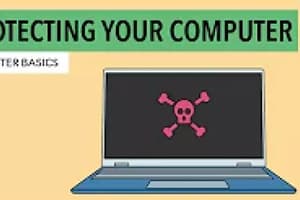Podcast
Questions and Answers
Flashcards are hidden until you start studying
Study Notes
Types of Virus Protection
-
Antivirus Software
- Scans and removes viruses and malware.
- Provides real-time protection against threats.
- Regular updates are essential for effectiveness.
-
Firewalls
- Monitors incoming and outgoing network traffic.
- Acts as a barrier between a trusted internal network and untrusted external networks.
- Can be hardware-based or software-based.
-
Email Filtering
- Scans emails for malicious attachments and links.
- Blocks spam and phishing attempts.
- Important for preventing virus entry through email.
-
Web Protection
- Blocks access to malicious websites.
- Uses URL filtering and phishing protection.
- Often integrated into browsers or provided by antivirus software.
Best Practices for Virus Protection
-
Regular Updates
- Keep operating systems and software up to date.
- Install patches to fix security vulnerabilities.
-
Backup Data
- Regularly back up important files and data.
- Use external drives or cloud solutions for backup.
-
Safe Browsing Habits
- Avoid clicking on unknown links or downloading suspicious files.
- Use secure websites (HTTPS) for transactions.
-
Use Strong Passwords
- Create complex passwords and change them regularly.
- Consider using a password manager.
-
Educate Users
- Train users to recognize phishing attempts and suspicious activities.
- Promote awareness of safe online practices.
Common Threats
-
Viruses
- Self-replicating programs that infect files and systems.
- Often spread through email attachments and downloads.
-
Worms
- Standalone malware that replicates and spreads without human intervention.
- Exploits network vulnerabilities.
-
Trojan Horses
- Malware disguised as legitimate software.
- Can create backdoors for unauthorized access.
-
Ransomware
- Encrypts data and demands payment for decryption.
- Can lead to significant data loss and operational disruption.
-
Spyware
- Secretly collects user information and activity.
- Can lead to identity theft and privacy violations.
Conclusion
Effective virus protection requires a combination of software tools, best practices, and user education. Staying informed about threats and maintaining a proactive approach is key to safeguarding systems and data.
Types of Virus Protection
- Antivirus Software: Scans for and eliminates viruses and malware, offering real-time threat protection. Regular updates are necessary to maintain effectiveness.
- Firewalls: Monitors network traffic, serving as a barrier between trusted internal networks and untrusted external ones. Firewalls can be either hardware-based or software-based.
- Email Filtering: Scans emails to identify and block malicious attachments and links, preventing spam and phishing attempts that may introduce viruses.
- Web Protection: Blocks access to harmful websites through URL filtering and phishing protection, typically integrated into web browsers or provided by antivirus solutions.
Best Practices for Virus Protection
- Regular Updates: Essential to keep operating systems and software up to date with patches that address security vulnerabilities.
- Backup Data: Important files and data should be regularly backed up using external drives or cloud storage solutions to prevent loss.
- Safe Browsing Habits: Users should avoid clicking unknown links or downloading suspicious files, and prefer secure websites (those using HTTPS) for transactions.
- Use Strong Passwords: Creating complex, regularly changed passwords is crucial; using a password manager can assist in managing them.
- Educate Users: Training users to identify phishing attempts and suspicious activities helps promote safe online practices.
Common Threats
- Viruses: Self-replicating programs that infect files and systems, often spread via email attachments or downloads.
- Worms: Standalone malware that replicates independently, exploiting network vulnerabilities without human intervention.
- Trojan Horses: Malicious software disguised as legitimate applications that can create backdoors for unauthorized access.
- Ransomware: Encrypts data and demands a ransom for decryption, which can result in significant data loss and disruptions.
- Spyware: Secretly gathers user information and activities, leading to potential identity theft and privacy violations.
Conclusion
Effective virus protection is achieved through the integration of software tools, adherence to best practices, and user education. Maintaining awareness of emerging threats and adopting a proactive security approach is vital for safeguarding systems and sensitive data.
Studying That Suits You
Use AI to generate personalized quizzes and flashcards to suit your learning preferences.




